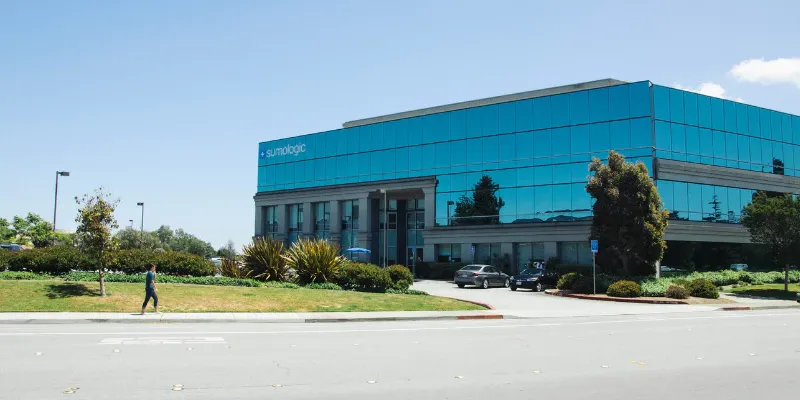1562049613274.png)
Sumo Logic
View Brand PublisherHow Swiggy, India’s largest food delivery service, delivers a better customer experience with Sumo Logic

Founded in 2014, Swiggy is India’s leading on-demand delivery platform with a vision to elevate the quality of life for the urban consumer by offering unparalleled convenience. It connects consumers to over 1,00,000 restaurant partners across over 200 cities in India. Using innovative technology, Swiggy provides a hassle-free, fast and reliable delivery experience. Every order delivered by Swiggy’s fleet of 1.95 lakh active delivery partners, the largest in India, ensures a host of customer-centric features like lightning fast delivery, no minimum order value, live order tracking, and 24/7 customer support.
Putting the customer at the heart of everything they do
To its customers, Swiggy is known as the company that gets their food to them really quickly and seamlessly. To its employees, Swiggy is in the business of delivering convenience and making sure that the promise is kept each time, every time. This means obsessing about each and every part of the order delivery and customer experience -- so that when a customer orders from Swiggy they do so with the implicit trust and knowledge that it's going to work. Everything Swiggy does -- from the design of their app to their delivery algorithms, backend systems, the scale at which they operate and the operational procedures they put in place, are all extremely well thought through, to deliver an enhanced customer experience.
Scaling up for 3X
Swiggy’s customer-first experience has paid off. Over the last year alone, Swiggy saw the number of orders increase by a factor of three. As a three-sided marketplace consisting of restaurant and store partners, delivery partners and end customers, ensuring that supply and demand are in place and that it’s a win-win for everyone, is at the core of the business. They have a very strong customer-centric obsessiveness and believe that if they do what is right for the customer, the other parts of the ecosystem take care of themselves.
What do logs have to do with it?
Simply put, logs are to a company, what an x-ray report is to a doctor. Logs provide visibility into the health of the application and infrastructure stack. Without logs, the internal operations of most IT components would be inscrutable. The lack of log visibility further creates operational challenges when modern applications are leveraging the cloud, the infrastructure they don’t own, and mircoservices architecture where three-tier architecture is transformed into n-tier architecture with many-to-many communications between those services.
In the event of a security incident or operational outage, your DevOps, ITOps, and SecOps team(s) do not have insight that allows them to quickly resolve the issue. This lack of visibility into their stack often creates higher application latency and more system outages, which translates into poor customer experience and customer churn.
Running infrastructure at scale
Running infrastructure at Swiggy’s scale requires a great amount of observable insight into what the systems are doing and how they are performing, in order to be able to make sure that the service delivery is seamless. This means being able to look at metrics, look at logs, look at events happening on each of the systems and servers, be able to examine them, discover early warning signals of something going wrong, and intervening quickly.
In order to do this, Swiggy needed infrastructure that allowed them to collect, store and analyse logs as they come in, and to be alerted on conditions that emerge out of that analysis. While they started off by doing this with their own, in-house infrastructure, they started seeing problems as they hit scale. This led to considerations about what the core technological innovation that they wanted to focus on was. Was logging with an inbuilt capability as important to them or was it something that was better served through an appropriate off-the-shelf solution?

Amit Garde, Vice President of Engineering for Platforms & Production Engineering at Swiggy
“We were very clear that we would not ‘settle’ on a second-rate solution.” Amit Garde, Vice President of Engineering for Platforms & Production Engineering at Swiggy
When Swiggy looked at it in the perspective of core vs context, it became apparent that if there was a good solution that eliminated their operational overhead, scaled with their requirements, was easy to use and operate, and gave them that additional leveraging capability of being able to bring that observability to their infrastructure through logs, metrics, monitoring and alerting, it would make a whole lot of sense. It was with that perspective that they decided on Sumo Logic.
Why Swiggy chose Sumo Logic
When Swiggy formulated the criterion of what they were looking for in a solution, it was the effectiveness of being able to examine logs and extract insight from logs in real time that stood first. Scalability was also a key factor in the decision. As an extremely rapidly-growing business, they did not want to be in a situation where they had to relook at provisioning thresholds or capacities every now and then. They wanted something that would scale seamlessly as their volume increased. Swiggy also wanted a significant improvement on their current operational burden, which meant that the solution was ideally just a component they just fitted in, that worked and freed up their operations teams from having to worry about the logging infrastructure as an object by itself. Finally, all of this had to happen at a price point that was cost-effective and made sense for them.
The Sumo Logic advantage
Swiggy’s primary use of Sumo Logic was to ensure that their systems are always up, always serving customers, and never going down and that they were in constant control of what is happening. Every engineer in Swiggy has access to Sumo Logic logs. Any traces that the system emits allow them to detect something going wrong, especially in an early warning sense. The observability lens that Sumo Logic gives them is a critical overview, day in and day out for routine monitoring sets and debugging in situations where an emergent problem presents itself. The observability lens also helps Swiggy from a long-term planning and optimization point of view, where their systems decide an operation could be better.
For Swiggy, Sumo Logic’s distinctive position of being log-focused first, with the aim to be the best in that niche space helped them stand out as a clear choice. Having evaluated and looked explicitly at the trade-off between composing a best-of-breed solution and a single-umbrella one, they decided that what made the most sense was going for a ‘horses for courses approach’. In this case, it meant going with a log-focused solution for logs and other solutions for other aspects, hence Sumo Logic.

Sumo Logic Headquarters, US
One noticeable instance where Sumo Logic’s solution stood Swiggy in good stead was with the recurring problem of repeated logs. With Sumo Logic processing around 3-4TB of logs every day from Swiggy, with hundreds or thousands of log lines for essentially the same root cause, it can add to clutter. especially in a crunch where you’re trying to de-bug very rapidly. Sumo Logic’s log review feature provides an additional level of intelligence and identifies multiple repetitive instances of logs coming from the same origin, and reduces the amount of clutter that an operations engineer or an engineer debugging a systems incident has to look at. It helped Swiggy substantially reduce the time to discover the problem and the time to address it.
Sumo Logic’s visualisation of data also helped improve observability. Anything that makes data not just available quickly, but easier to understand and isolate a root cause problem makes life easier, especially with a national player in hyper-local delivery space like Swiggy.
A win-win-win situation
The end result is that the customer gets rock-solid service from Swiggy, and the amount of hassle that Swiggy had to go through to ensure that those systems ran, reduced drastically. The time they had to spend on care and feeding and managing logs on their own was streamlined. This meant engineering capacity was freed up and made available for innovating on behalf of the customer.
Starting off with food delivery, Swiggy has now delved into the hyper-local delivery space, which is becoming one of the most attractive avenues of the Indian retail market. They’ll continue to explore facets of convenience as their ambition to serve customers well increases, and you will see other offerings from Swiggy as well.
Finally, beyond the customer, Sumo Logic has also made a visible difference in the life of Swiggy’s engineering and production teams. And that’s saying a lot.
Watch Amit Garde, Vice President of Engineering for Platforms & Production Engineering at Swiggy, talk about the Swiggy-Sumo Logic partnership here:
About Sumo Logic
Sumo Logic is a secure, cloud-native, machine data analytics service, delivering real-time, continuous intelligence from structured, semi-structured and unstructured data across the entire application lifecycle and stack. More than 2,000 customers around the globe rely on Sumo Logic for the analytics and insights to build, run and secure their modern applications and cloud infrastructures. With Sumo Logic, customers gain a multi-tenant, service-model advantage to accelerate their shift to continuous innovation, increasing competitive advantage, business value and growth.
Founded in 2010, Sumo Logic is a privately held company based in Redwood City, Calif. and is backed by Accel Partners, Battery Ventures, DFJ Growth, Franklin Templeton, Greylock Partners, IVP, Sapphire Ventures, Sequoia Capital, Sutter Hill Ventures and Tiger Global Management. For more information, visit: www.sumologic.com







